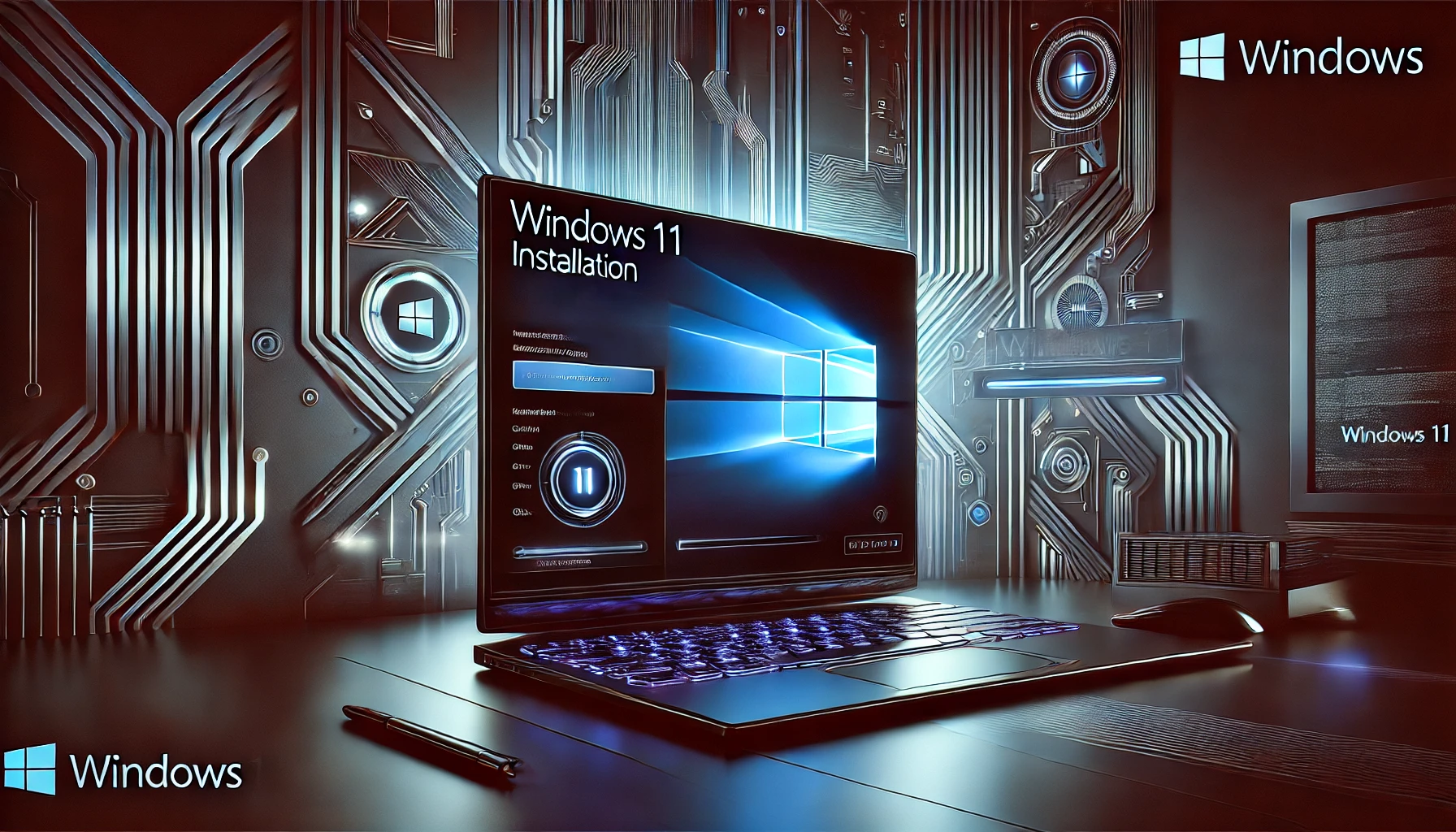How to Install Windows 11: A Step-by-Step Guide
Windows 11 is the latest operating system from Microsoft, offering a modern interface, enhanced security, and improved performance. This guide will walk you through the installation process step by step.
System Requirements
Before installing Windows 11, ensure your PC meets the minimum system requirements:
- Processor: 1 GHz or faster with at least 2 cores on a compatible 64-bit processor
- RAM: 4 GB or more
- Storage: 64 GB or more
- TPM: Trusted Platform Module (TPM) version 2.0
- Secure Boot: Must be enabled
- Graphics Card: DirectX 12 compatible with WDDM 2.0 driver
- Display: 720p, 9” or greater screen size
- Internet Connection: Required for Windows 11 Home setup
To check compatibility, download and run the PC Health Check tool from Microsoft’s official website.
Step 1: Download Windows 11 Installation Media
- Go to the Microsoft Windows 11 download page.
- Choose one of the following methods:
- Windows 11 Installation Assistant (for upgrading from Windows 10).
- Create Windows 11 Installation Media (for bootable USB/DVD).
- Download Windows 11 Disk Image (ISO) (for manual installation).
Step 2: Create a Bootable USB Drive (If Performing a Fresh Install)
- Download the Media Creation Tool from the Microsoft website.
- Run the tool and select Create installation media (USB flash drive, DVD, or ISO file).
- Choose the language, edition, and architecture (64-bit).
- Insert a USB flash drive (at least 8 GB) and select it.
- Click Next, then wait for the tool to create the bootable USB.
Step 3: Configure BIOS/UEFI Settings
- Restart your PC and enter the BIOS/UEFI by pressing F2, F12, Delete, or Esc (varies by manufacturer).
- Enable Secure Boot and TPM 2.0 if not already enabled.
- Set the USB drive as the primary boot device.
- Save changes and exit the BIOS.
Step 4: Install Windows 11
- Insert the bootable USB drive and restart your PC.
- When prompted, press any key to boot from the USB.
- Select your language, time, and keyboard input, then click Next.
- Click Install now.
- Enter a valid product key (or select “I don’t have a product key” to activate later).
- Choose the Windows 11 edition matching your license.
- Select Custom: Install Windows only (for a clean installation).
- Choose the drive to install Windows 11. Delete existing partitions if needed and create a new one.
- Click Next, and the installation will begin.
Step 5: Complete the Setup Process
- After installation, your PC will restart several times.
- Follow the Out-of-Box Experience (OOBE) setup steps:
- Choose your region and keyboard layout.
- Connect to a network (required for Windows 11 Home).
- Sign in with a Microsoft account (or create a local account in Pro editions).
- Set up a PIN for quick login.
- Customize privacy settings.
- Choose whether to restore files/settings or start fresh.
- Windows will finalize the setup and boot into the desktop.
Step 6: Install Drivers and Updates
- Open Settings > Windows Update and install the latest updates.
- Check Device Manager for any missing drivers and update them.
- Install manufacturer-specific drivers (graphics, chipset, network, etc.).
Step 7: Personalize and Secure Windows 11
- Customize the Start menu and taskbar settings.
- Enable BitLocker (if available) for security.
- Install your preferred apps and software.
- Create a backup restore point.
Conclusion
You’ve successfully installed Windows 11! Enjoy the new features and enhanced performance. If you encounter any issues, visit Microsoft’s official support page for troubleshooting steps.
Windows 11
Windows 11 is the latest major release of Microsoft’s Windows NT operating system, released on October 5, 2021 as the successor to Windows 10 (2015). It



Leave a Reply